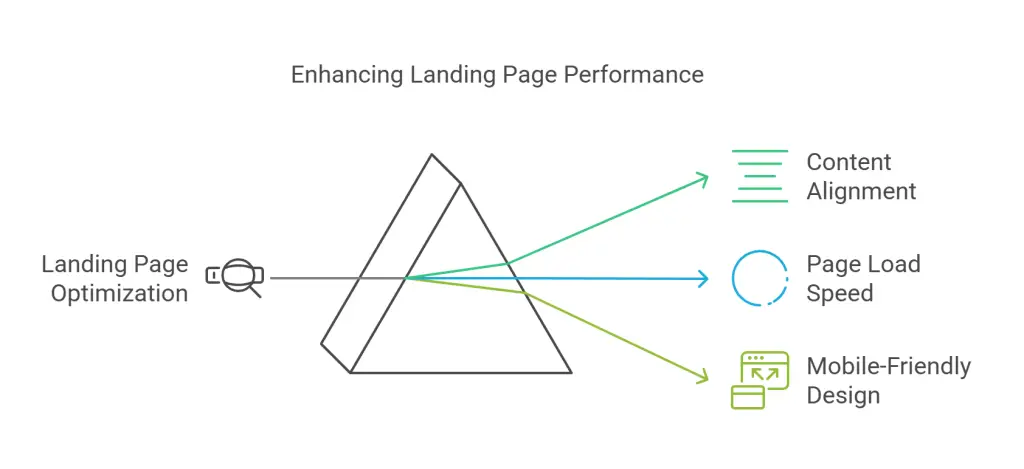Running successful Pay-Per-Click (PPC) campaigns is a critical step in driving targeted traffic and leads for small businesses. However, a key factor that often goes unnoticed by small business owners is the Quality Score—a crucial component of search engine PPC campaigns that determines your ad’s relevance and effectiveness.
In this comprehensive guide, we will delve into everything you need to know about Quality Score: what it is, why it’s so important, where to focus your efforts to improve it, when to evaluate and optimize it, and practical tips to boost your Quality Score.
What is Quality Score?
Quality Score is a rating given by search engines, like Google, that measures the quality and relevance of your PPC ads. It influences how your ads perform in search engine results and affects the amount you pay for each click. Quality Score typically ranges from 1 to 10, with 10 being the highest score. The higher your Quality Score, the better your ad will perform, and the less you’ll pay for higher positions in search results.
The Quality Score is determined by the following factors:
1. Ad Relevance
Ad relevance is a measure of how closely your ad matches the user’s search query. If your ad copy and the keywords you target are closely aligned with the intent of the search, your ad is considered highly relevant. Google prioritizes ads that provide the best user experience, meaning if your ad answers the searcher’s query precisely, you will achieve a higher score in this category.
2. Landing Page Experience
Google also evaluates the quality of the page that users are taken to after clicking on your ad. The landing page should provide useful, relevant information related to the ad and offer a smooth, seamless user experience. A poor landing page experience, such as slow load times or irrelevant content, will negatively affect your Quality Score.
3. Expected Click-Through Rate (CTR)
CTR refers to how often people click on your ad when they see it. Google estimates an expected CTR based on how well your keywords, ad copy, and past performance are aligned with the search intent. If your ad garners a high CTR, it indicates that it is engaging and relevant, contributing positively to your Quality Score. Ads with a poor CTR will drag your score down.
How is Quality Score Calculated?
Google’s formula for calculating Quality Score is a closely guarded secret, but the three primary components (ad relevance, landing page experience, and CTR) weigh heavily. Although we can’t pinpoint the exact formula, understanding these key factors helps small businesses know where to focus their efforts to optimize PPC campaigns.

Why is Quality Score Important for Small Businesses?
For small businesses, making the most of every dollar spent on advertising is crucial. This is where Quality Score becomes a game-changer. Here’s how a high Quality Score benefits your small business:
1. Lower Cost-Per-Click (CPC)
A higher Quality Score often leads to a lower cost-per-click. Google rewards advertisers who provide relevant and high-quality ads by charging them less for clicks. This means a small business with a tight budget can stretch its ad spend further if it improves its Quality Score. For example, a business with a Quality Score of 8 might pay 25% less per click compared to one with a score of 6 for the same keyword.
2. Higher Ad Rank
Quality Score plays a major role in determining your Ad Rank—the position your ad takes in search results. Google considers both your bid amount and your Quality Score to determine your Ad Rank. Even if you have a lower bid, a high Quality Score can allow your ad to appear in a higher position than competitors who are bidding more but have lower Quality Scores. For small businesses, this can provide an opportunity to compete with larger brands with bigger budgets.
3. Better Return on Ad Spend (ROAS)
As a small business, you need to maximize every dollar. By improving your Quality Score, you increase your chances of getting more clicks for less money and delivering a better user experience on your landing pages, which can result in higher conversion rates. This leads to a better overall return on ad spend, helping you grow your business more effectively.

Where to Focus Your Efforts to Improve Quality Score
Improving your Quality Score is an ongoing process, but certain areas have a more significant impact than others. Focusing on these key components will help you steadily raise your score:
1. Ad Relevance: Crafting the Right Message
Your ad’s relevance to the search query is crucial in determining your Quality Score. Here are a few strategies to ensure your ad stays relevant:
- Keyword-Targeted Ads: Organize your PPC campaigns so that each ad group is focused on a small set of closely related keywords. This will allow you to write highly targeted ads that speak directly to the user’s intent.
- Personalized Ad Copy: Write copy that clearly addresses the needs of your target audience. For example, if you own a local bakery, your ad copy could highlight “freshly baked goods” or “free delivery in the city,” making it more likely to align with the searcher’s intent.
- Dynamic Keyword Insertion (DKI): Use DKI in your ad copy to automatically insert the exact keyword the user searched for into your ad headline or body text. This not only increases relevance but also enhances the chances of attracting clicks.
2. Landing Page Optimization: Building the Perfect Destination
A relevant and user-friendly landing page is vital for improving Quality Score. If users click your ad but leave quickly because the landing page doesn’t meet their expectations, your Quality Score will suffer. Here are some ways to improve the landing page experience:
- Content Alignment: Ensure the content on your landing page is highly relevant to the ad. If your ad promises “50% off on leather bags,” your landing page should feature leather bags prominently, along with the discount offer.
- Page Load Speed: A slow landing page can frustrate users and lead to higher bounce rates. Use tools like Google’s PageSpeed Insights to evaluate and improve the load times of your landing pages.
- Mobile-Friendly Design: With a growing number of searches happening on mobile devices, it’s critical to have a mobile-optimized landing page. Ensure your pages are responsive and provide a seamless experience for mobile users.

3. Click-Through Rate (CTR): Increasing Engagement
A high CTR signals that your ad is engaging and relevant. Improving CTR is key to boosting your Quality Score. To increase your CTR:
- Use Power Words: Power words like “exclusive,” “limited time,” or “guaranteed” in your ad copy can encourage clicks by creating a sense of urgency or value.
- A/B Test Your Ads: Regularly test different versions of your ads to see which one performs better. This can include variations in headlines, descriptions, and CTAs. Even small changes can lead to a significant improvement in CTR.
- Ad Extensions: Use Google’s ad extensions, such as sitelinks, callouts, and structured snippets, to provide additional information and give users more reasons to click on your ad.

When to Evaluate and Optimize Quality Score
Just as with any other marketing metric, you need to consistently monitor and evaluate your Quality Score to ensure your campaigns remain competitive. Here are some points at which you should focus on Quality Score optimization:
1. Before Launching a Campaign
Quality Score evaluation should begin at the start of your campaign. Spend time researching and organizing your keywords, writing relevant ad copy, and optimizing your landing pages before the campaign goes live. This ensures that you begin with a strong foundation.
2. Weekly Performance Reviews
Once your campaign is up and running, make it a habit to review your Quality Score regularly—weekly reviews work well for most businesses. This will help you quickly identify any keywords or ads that are underperforming so you can make adjustments.
3. Ad Copy Refresh
As trends and user behavior shift over time, your ad copy might need refreshing to maintain its relevance. Monitor the performance of your ads, and don’t hesitate to test new versions to see what resonates with your audience.
4. Landing Page Updates
Landing pages should be continuously updated to match your current campaigns. If you’re running a seasonal promotion or launching new products, make sure your landing page reflects this. Outdated or irrelevant landing pages will hurt both your Quality Score and conversions.

Case Study: How a Local Business Improved Its Quality Score
To illustrate the importance of Quality Score, let’s consider a fictional small business: LuxeLeather, a local leather goods retailer that specializes in handmade bags and accessories. LuxeLeather initially struggled with their PPC campaigns, which had a low-Quality Score of 4 to 5. Their ads were not showing up as often, and their cost-per-click (CPC) was higher than expected, making it difficult for them to compete with larger retailers.

Problem 1: Low Ad Relevance
LuxeLeather’s ads were broad and unfocused, targeting generic keywords like “leather bags” and “fashion accessories,” which didn’t align well with the specific searches customers were making.
Problem 2: Poor Landing Page Experience
Their landing page had a slow load time, was not mobile-friendly, and featured too many products, making it difficult for customers to find the specific items advertised in the PPC campaign.
Strategy: Focused Ad Groups and Keyword Selection
To improve their Quality Score, LuxeLeather revamped their ad strategy. They segmented their PPC campaigns into highly focused ad groups, each targeting specific products like “handmade leather handbags” and “leather laptop cases.” The ad copy was personalized to highlight their unique selling points, such as “crafted by local artisans” and “premium leather with a lifetime guarantee.”
Solution: Landing Page Overhaul
They also overhauled their landing pages, making them more product-specific. Each ad directed users to a dedicated landing page that prominently featured the product being advertised, with clear product descriptions, high-quality images, and an easy-to-use purchasing option.
Results
Within three months, LuxeLeather’s Quality Score improved from an average of 5 to 8 across all their campaigns. Their cost-per-click decreased by 20%, and their ad visibility increased, leading to a 35% increase in website traffic and a 15% improvement in conversion rates.

Tips for Improving Quality Score in PPC Campaigns
Here are some additional, practical tips you can implement to improve your Quality Score:
- Utilize Negative Keywords: Identify search terms that are irrelevant to your business and add them as negative keywords. This will prevent your ad from appearing in irrelevant searches, which can hurt your CTR and Quality Score.
- Maintain Keyword Consistency: Make sure the keywords you are bidding on are closely aligned with the text in your ad and the content on your landing page. The more consistency you have, the higher your relevance will be.
- Create Multiple Ad Variations: Always have multiple ad variations running to test which performs best. Regularly update your ads based on what generates the highest CTR.
- Optimize for Mobile: Ensure both your ads and landing pages are optimized for mobile devices. Many users now search and click ads from their phones, and a poor mobile experience can severely impact your Quality Score.
- Engage in Regular Testing: Continually test and tweak elements of your campaign, from ad copy and landing pages to keywords and targeting. PPC is not a “set it and forget it” process; constant iteration is key.

Conclusion
Quality Score is a fundamental component of running successful PPC campaigns, especially for small businesses with limited budgets. Improving your Quality Score can result in lower costs, better ad placements, and higher returns on ad spend. By focusing on ad relevance, optimizing your landing page experience, and increasing your CTR, you can significantly improve your Quality Score and campaign performance.
Keep in mind that Quality Score optimization is an ongoing process, and regular monitoring and adjustments are necessary to maintain a competitive edge in the digital marketing landscape. Implement the tips discussed in this article to boost your Quality Score, and you’ll soon see more effective, efficient PPC campaigns driving growth for your business.
Frequently Asked Questions
What is Quality Score in PPC advertising?
Quality Score is a 1-10 rating used by search engines like Google to measure ad relevance, expected CTR, and landing page experience. A higher score improves ad rank and lowers cost-per-click (CPC), making campaigns more cost-effective while increasing visibility in search engine results.
How does Quality Score impact PPC ad costs?
A high Quality Score lowers cost-per-click (CPC) by rewarding relevant, high-quality ads. Google prioritizes ads with strong relevance and expected click-through rates, reducing the bid amount needed for a top position. This helps advertisers maximize their budget while maintaining visibility.
What are the key factors influencing Quality Score?
Quality Score is based on three main factors: ad relevance to search queries, expected click-through rate (CTR), and landing page experience. A highly relevant ad with engaging content and a well-optimized landing page will achieve a higher Quality Score, improving performance and lowering CPC.
How can advertisers improve their Quality Score?
To boost Quality Score, ensure ad copy aligns with keywords, create compelling CTAs, and optimize landing pages for user experience. Increasing CTR through engaging ads and improving page load speed enhances Quality Score, leading to better rankings and lower ad costs.
Why is Quality Score important for small businesses?
Small businesses benefit from a high Quality Score by reducing ad spend while improving visibility. A better score means lower CPC and higher ad rankings, allowing small advertisers to compete with larger brands without needing a massive budget, ensuring a better return on investment.
Further reading
Gordon Donnelly, “What Is Quality Score & How Does It Affect Google Ads?” WordStream, last modified February 13, 2023. https://www.wordstream.com/quality-score. (Accessed March 7, 2025).
PPC Hero, “The Ultimate Guide to AdWords Quality Score,” PPC Hero, last modified April 10, 2023. https://www.ppchero.com/ultimate-guide-to-adwords-quality-score/. (Accessed March 7, 2025).
Semrush, “What Is Quality Score? How to Improve It,” Semrush Blog, last modified July 15, 2023. https://www.semrush.com/blog/quality-score/. (Accessed March 7, 2025).
Surfside PPC, “What Is Google Ads Quality Score & How to Improve It,” YouTube, uploaded August 18, 2023. https://www.youtube.com/watch?v=DiFbz24AeCo. (Accessed March 7, 2025).
Instapage, “Quality Score: What It Is & Why It Matters for Your PPC Ads,” Instapage Blog, last modified November 8, 2023. https://instapage.com/blog/quality-score/. (Accessed March 7, 2025).







